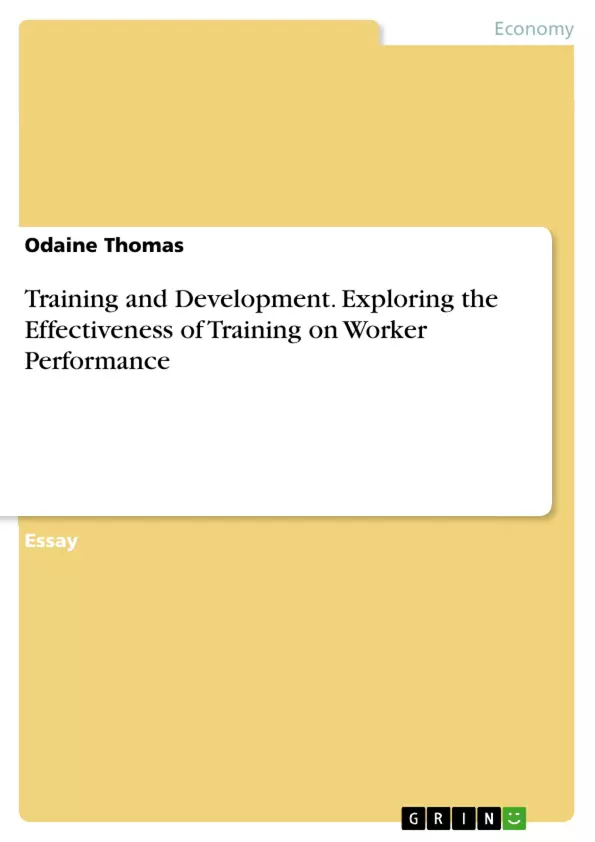This paper speaks about the importance of employees in a business especially when properly trained. It goes deeper into the various methods of training that is used by different organizations. The pros and the cons of training are also explored while focusing on how training affects the outcome of staff performance, customer satisfaction, turnover rates, staff loyalty and market value of the company.
Inhaltsverzeichnis (Table of Contents)
- Training and Development: Exploring the Effectiveness of Training on Worker Performance
- Introduction
- Importance of Human Resource
- Training and Worker Performance
- Understanding Training
- Benefits of Training
- Types of Training Methods
- On-the-Job Training
- Off-the-Job Training
- Worker Performance
- Factors Influencing Worker Performance
- Measuring Worker Performance
- Impact of Worker Performance on Organizational Success
Zielsetzung und Themenschwerpunkte (Objectives and Key Themes)
This paper examines the significance of training on worker performance, aiming to understand its impact on various aspects of organizational success, including employee satisfaction, turnover rates, and market value. It explores different training methodologies and their effectiveness in enhancing employee skills and knowledge.
- The Importance of Training for Organizational Growth
- Different Types and Methods of Training Programs
- The Relationship Between Training and Worker Performance
- Factors Influencing Worker Performance
- Measuring Worker Performance and its Impact on Organizational Success
Zusammenfassung der Kapitel (Chapter Summaries)
- Introduction: This chapter highlights the critical role of human resources in organizational success. It emphasizes the necessity of training to improve employee performance and efficiency, ultimately contributing to organizational goals.
- Understanding Training: This section provides a definition of training and explores its various benefits, including enhanced employee skills, improved work quality, and enhanced adaptation to change. Different training methods are discussed, including on-the-job and off-the-job training approaches.
- Worker Performance: This chapter examines the factors influencing worker performance, including company policies, working conditions, and employee relationships. It explores different methods for measuring worker performance, such as productivity, absenteeism, and satisfaction.
Schlüsselwörter (Keywords)
This study focuses on the relationship between training and worker performance, examining key topics such as employee development, training methods, worker productivity, employee satisfaction, organizational growth, and the impact of worker performance on company success.
- Citar trabajo
- Odaine Thomas (Autor), 2017, Training and Development. Exploring the Effectiveness of Training on Worker Performance, Múnich, GRIN Verlag, https://www.grin.com/document/387381



